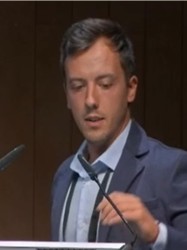BibTex format
@article{Mazzarotto:2020:10.1161/CIRCULATIONAHA.119.037661,
author = {Mazzarotto, F and Tayal, U and Buchan, RJ and Midwinter, W and Wilk, A and Whiffin, N and Govind, R and Mazaika, E and de, Marvao A and Dawes, TJW and Felkin, LE and Ahmad, M and Theotokis, PI and Edwards, E and Ing, AY and Thomson, KL and Chan, LLH and Sim, D and Baksi, AJ and Pantazis, A and Roberts, AM and Watkins, H and Funke, B and O'Regan, DP and Olivotto, I and Barton, PJR and Prasad, SK and Cook, SA and Ware, JS and Walsh, R},
doi = {10.1161/CIRCULATIONAHA.119.037661},
journal = {Circulation},
pages = {387--398},
title = {Reevaluating the Genetic Contribution of Monogenic Dilated Cardiomyopathy.},
url = {http://dx.doi.org/10.1161/CIRCULATIONAHA.119.037661},
volume = {141},
year = {2020}
}

